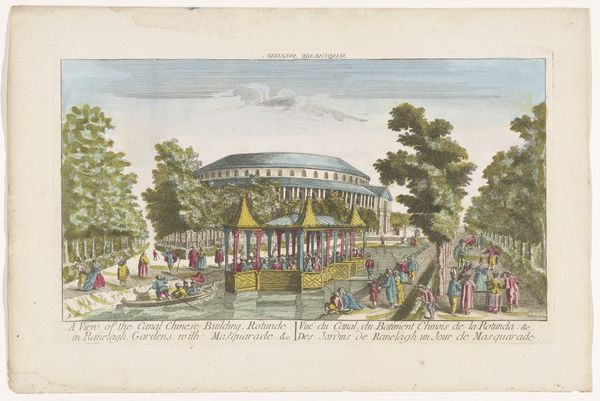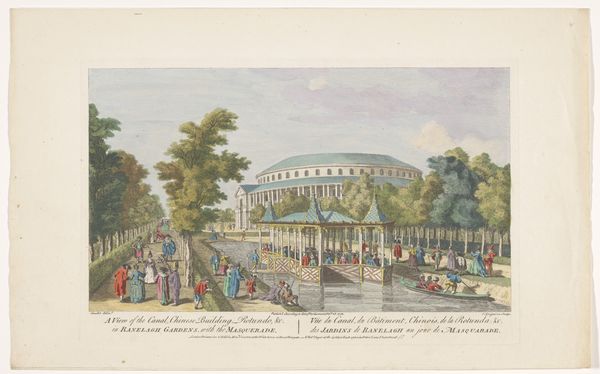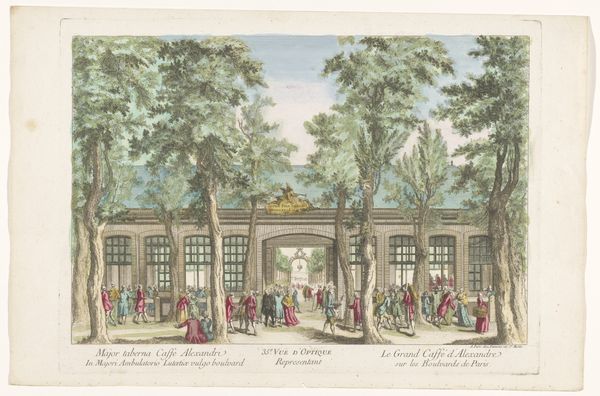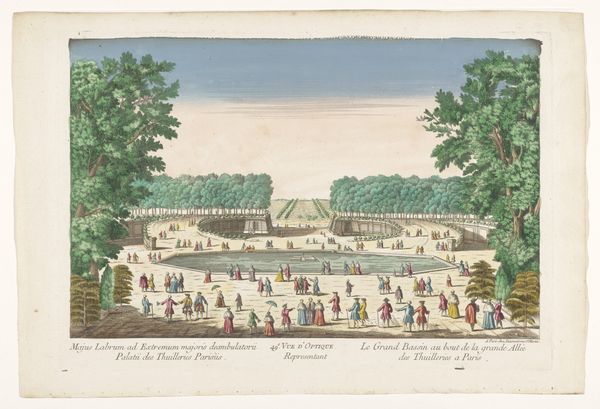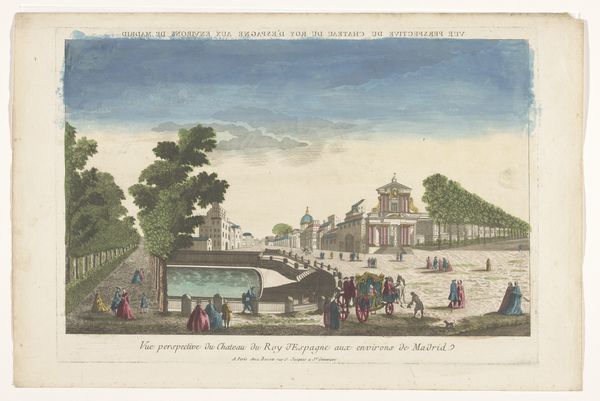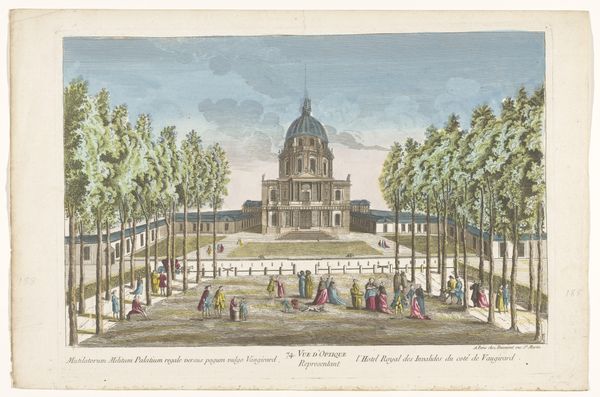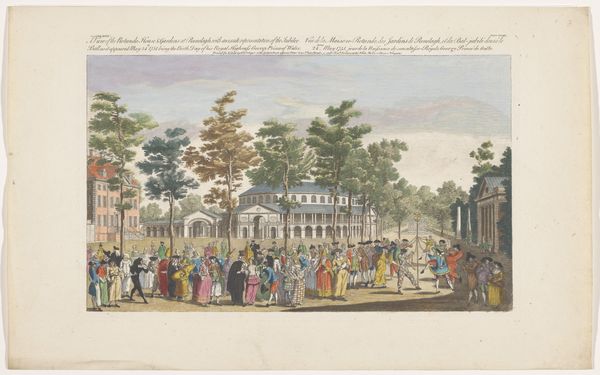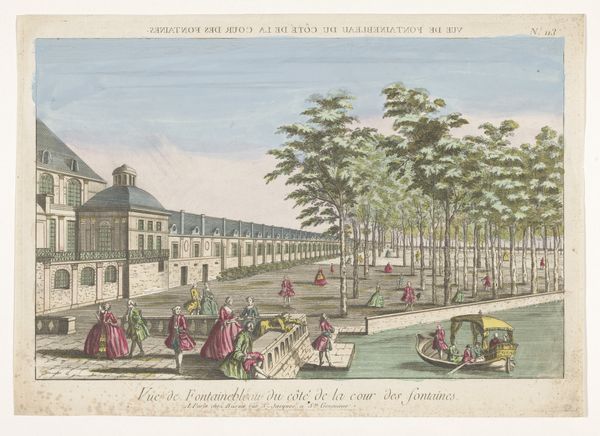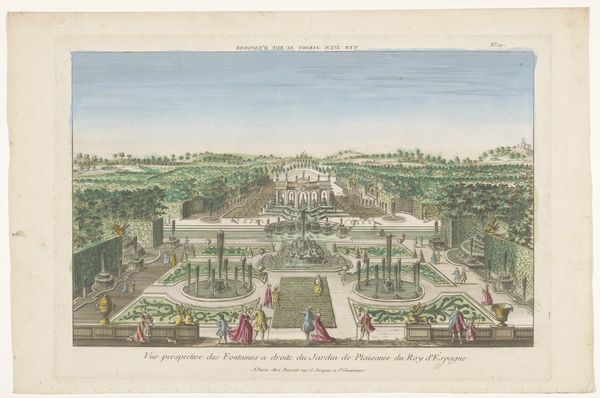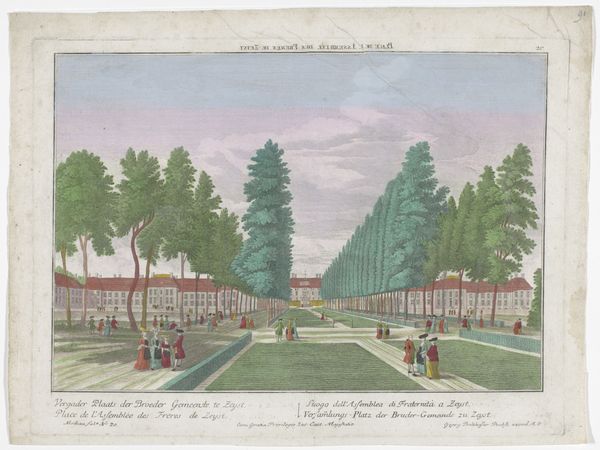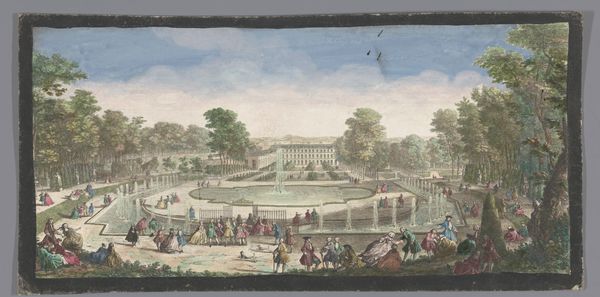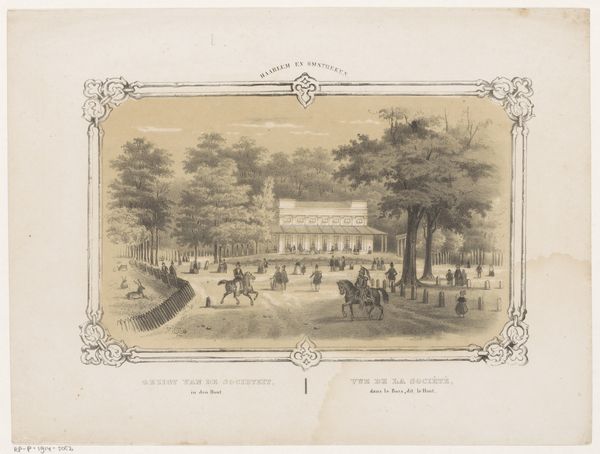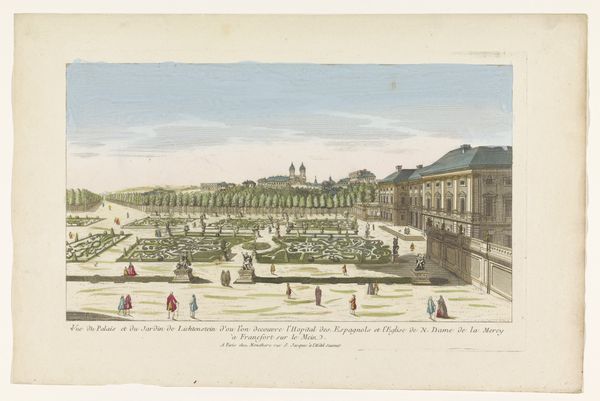
Gezicht op de Rotunda en het Chinese paviljoen op het kanaal in Ranelagh Gardens te Londen met een gemaskerd bal 1752 - 1799
0:00
0:00
Dimensions: height 250 mm, width 428 mm
Copyright: Rijks Museum: Open Domain
Curator: Looking at "Gezicht op de Rotunda en het Chinese paviljoen op het kanaal in Ranelagh Gardens te Londen met een gemaskerd bal"—it’s a watercolor from around 1752 to 1799—I’m immediately struck by how airy and fanciful it feels. It’s like a fleeting, powdered dream. Editor: Yes, there's an unmistakable lightness, but I see something else too. Look at the masked figures and the 'Chinese' details – this wasn't just frivolous enjoyment. Ranelagh Gardens became a social laboratory, of sorts, a carefully constructed space where hierarchies were both reinforced and playfully subverted, think of the global trade and empire, which financed the garden's fantasies. Curator: That's an intriguing angle. I’m lost in the architecture of it. The Rotunda itself, a giant domed structure in the background, and the whimsical little Chinese pavilion, perfectly framing the canal. The artist really captured that sense of fashionable gathering. Almost like everyone's trying too hard to just be "there" enjoying themselves. Editor: Precisely! "Enjoyment" became a performance. Places like Ranelagh amplified inequalities, providing a venue for conspicuous consumption while others suffered. That architectural grandeur obscures a lot of systemic injustice if you think about the global trade network supporting the elite's "pleasures." Curator: Right. But artistically, look how the artist renders those crowds with such delicate precision, a little fleet of red cloaks punctuating the scene with this little red "POW". And those soft washes of colour give it such an ethereal quality. Even the trees seem to participate in the spectacle! It feels as though something big is gonna explode. Editor: Agreed. While aesthetically captivating, this piece offers a lens to understand the complex social choreography of the era, the masks, performances, and the underlying tensions of power. But did it explode? Do we even know how that masquerade would resolve that night? Curator: Perhaps the very act of looking at it, centuries later, allows us to finally "see" that it was already on fire? I leave with questions. Editor: Indeed, a painting that shows that what seems light and frivolous often carries a deeper, more troubled story within.
Comments
No comments
Be the first to comment and join the conversation on the ultimate creative platform.
